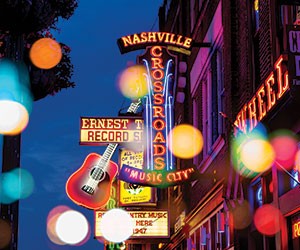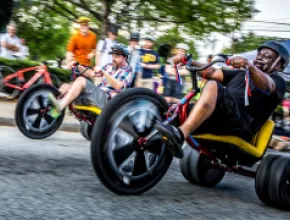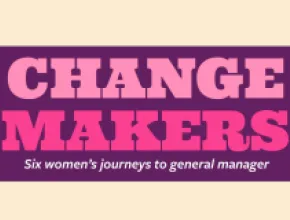With air travel costlier than ever, and some might say more problematic to boot, it’s little wonder that today’s “drive-to” events are popular for planners and attendees alike.
But while these functions often save groups time and money, they come with their own set of challenges to consider—and prompt plenty of planner-related questions. How do I handle parking? What makes for a great drive-to destination? How can I work with a venue to best accommodate my drive-to group?
Meetings Focus checked in with planners, hotel execs and destination reps from all over to get their directions on mapping out the best possible drive-to event. Here are the top takeaways!
Planner Perspectives
Frank LoBosco, with Glazier Football Coaching Clinics, holds several events each year for high school coaches around the country. He recently planned a gathering at the unique Sheraton and Westin Kansas City Crown Center two-hotel complex, where most attendees drove in from Missouri and the nearby states of Nebraska, Iowa and Arkansas.
“With a primarily ‘drive-to meeting’ one of the greatest challenges we face with events that can draw up to 2,000 attendees is parking,” LoBosco says. “Fortunately, the attendees don’t all show up at once for a three-day event and many carpool. However, we still find parking to be a challenge. At venues with limited parking spaces we need to be creative. Sometimes the hotel staff parks off-site and uses a shuttle, or sometimes an overflow lot is set up with a shuttle. At downtown events we will arrange for several parking lot and garage alternatives.”
LoBosco adds that traffic control can be an issue following the event, and he sometimes asks the meeting venue to provide traffic-flow control. He also says alerting attendees to the parking plan, including any negotiated discounts, is an essential aspect of his events.
As for location selection, you never know what might prompt a planner’s decision-making process.
“We chose Bucks County as our location primarily because there was a rash of UFO sightings there in 2008, but its convenient location is hard to beat for metropolitan Philadelphia and New Jersey residents,” says John Ventre, state director of the Mutual UFO Network of Pennsylvania, which holds a yearly fall conference in the area.
Joe Bottino, with the International Right of Way Association, held a gathering at Bucks County’s Peddler’s Village last April for association members in the Northeast, citing its convenient locale, among other bonuses.
“For me, Bucks County offers everything a group needs for a successful meeting or event,” Bottino states. “There are ample hotels and meeting venues to choose from, along with fine restaurants and entertainment for after the meeting.” PageBreak
Venue Viewpoints
At the J.W. Marriott Desert Springs Resort & Spa, which recently wrapped a $94 million makeover, Director of Sales and Marketing K.C. Kinsey offered his insights on paving the way for a successful drive-to.
“In order for a multiday conference to be successful, when held within a general drive radius, the destination must stand out and the property must offer compelling attributes that attracts the local attendee,” Kinsey says. “These compelling attributes certainly include the majestic nature of the facility, and the unique and significant offerings that make the journey special.”
He adds that his resort partners closely with the Palm Springs CVB to develop customized off-site offerings, and also focuses strongly on the transportation elements—such as coordinating private motorcoaches to ferry in attendees from nearby metro areas.
Lindsay Curry, director of sales for the Enchantment Group, oversees meetings at the Enchantment Resort in Sedona, Ariz., and Tides Inn in Irvington, Va., and opines that convenience alone does not ensure a successful drive-to affair.
“It may be easy for attendees to drive across town to a conference center or downtown to a hotel, but if the meeting is not mandatory, your attendance may be stronger by selecting a venue that is more alluring,” Curry says, adding that the inclusion of special spousal and family activities on the agenda can be another strong lure for drive-to attendees.
Destination Directives
In sunny central Florida, Visit Orlando’s president and CEO, George Aguel, believes the layout and affordability of a destination are at the heart of its drive-to allure.
“The key to a successful drive-to event is choosing a destination where all of the major attractions are in close proximity to the meeting facilities,” Aguel says. “This way, attendees can easily maximize their visit pre- and post- event. It’s also important to pick a locale that can fit any budget; that way, you’ll be sure to get a wide spectrum of attendees.”
Variety is another key factor, according to Aguel, as is communicating that variety to potential attendees.
“Choose [a destination] that has something for everyone—whether they like fine dining, golfing, shopping or experiencing popular attractions,” he explains. “And entice meeting-goers with all there is to see and do in the destination.”
Robin North, vice president of business development for the Macon-Bibb County [Ga.] CVB, reminds planners to keep the actual “drive” a focus when planning a drive-to, and that a great drive-to function “starts with planning with the drivers in mind.
“Don’t forget to create an adventure of the journey,” she adds. “List some of the attractions or landmarks they can find along the way.”
Timing is another crucial detail, North says.
“Don’t plan a tightly scheduled start-time,” she says. “If people are driving in, they will arrive over a period of time. And don’t plan a late end-time; people will want to get on the road early rather than late.”






